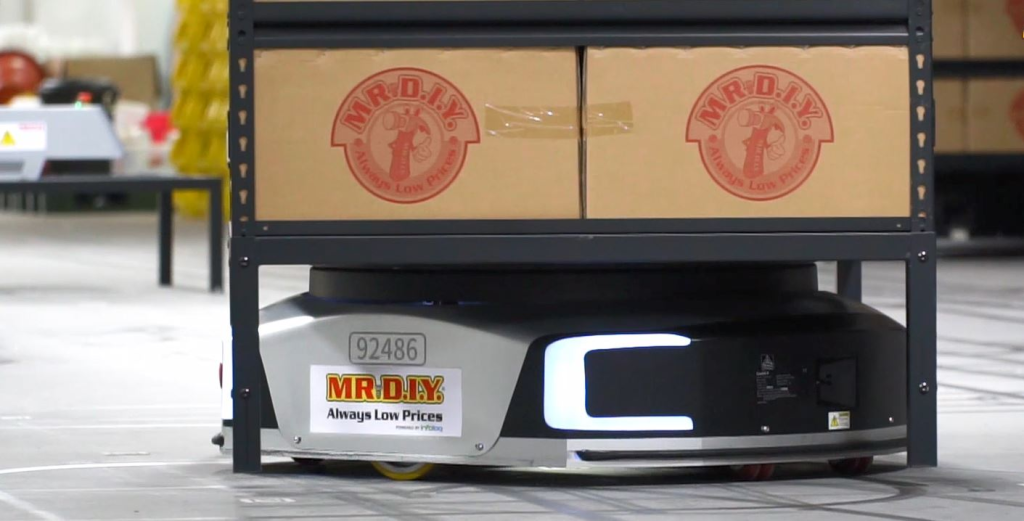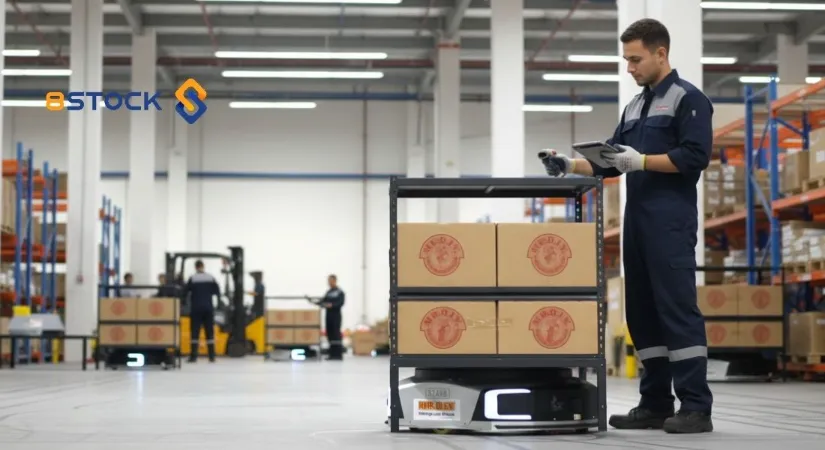Mr. DIY has transformed DIY retail through strategic warehouse innovation. As one of Asia’s leading home improvement retailers, the company operates a sophisticated warehouse network that balances efficiency with affordability.
This comprehensive review, examines Mr. DIY’s warehouse operations, technology adoption, and management strategies. We’ll explore how the company optimizes its supply chain to serve millions of customers across multiple markets.
Inside Mr. DIY Warehouse: Layout and Organization Systems
The physical organization and layout of a warehouse can significantly impact its overall efficiency. Mr. DIY’s warehouse operations are meticulously designed to facilitate seamless workflows.
Storage Zone Configuration
One of the distinctive features of the Mr. DIY warehouse is its strategic storage zone configuration. Each product category is allocated a specific zone, ensuring that frequently purchased items are accessible for quick picking and processing.
Product Categorization Systems
To streamline operations, Mr. DIY employs a sophisticated categorization system that groups products by type and size. This not only optimizes storage but also enhances the speed and accuracy of order fulfillment.
Picking and Packing Processes
The picking and packing processes at Mr. DIY leverage a multi-faceted approach. Orders are collected based on real-time data, ensuring that employees are directed to the most efficient picking paths. The packing stations are equipped with necessary materials and technology to minimize delays and errors.
Technology and Automation in Mr. DIY’s Warehouse Operations
Technology plays a pivotal role in warehouse operations, and Mr. DIY has embraced automation to enhance efficiency.
Robotic Systems and Automation Tools
Mr. DIY has integrated robotic systems designed specifically for e-commerce operations. These systems assist with inventory management and order picking, allowing for faster process cycles and reducing the reliance on manual labor.
Digital Warehouse Management Systems
A key component of Mr. DIY’s technological infrastructure is their digital warehouse management system (WMS). This software provides real-time tracking of inventory, enhances order accuracy, and facilitates communication across different warehouse departments.

Inventory Management Strategies at Mr. DIY
Managing inventory effectively is critical in a competitive retail environment. Mr. DIY employs several strategies to ensure that stock levels are optimized and customer demand is met.
Stock Rotation Methods
To maintain product freshness and minimize waste, Mr. DIY implements systematic stock rotation methods. This is particularly important in managing seasonal items that may have varying demand throughout the year.
Seasonal Inventory Planning
Mr. DIY’s seasonal inventory planning involves analyzing market trends and historical data to forecast demand during peak seasons. This approach enables them to stock the right quantities of products and effectively manage turnover rates.
Real-time Tracking Solutions
With the integration of advanced tracking solutions, Mr. DIY ensures that their inventory levels are continuously monitored. This enables quick adjustments to be made in response to fluctuating consumer demand.
Warehouse Logistics and Distribution Network
Efficient logistics and distribution are critical to ensuring that products reach customers in a timely manner. Mr. DIY has established a robust distribution network that integrates seamlessly with their warehouse operations.
Distribution Center Locations
Mr. DIY operates multiple distribution centers strategically located to ensure quick access to various regions. This geographic positioning enables them to minimize delivery times and enhance inventory replenish rates.
Last-Mile Delivery Optimization
To further enhance customer satisfaction, Mr. DIY has focused on optimizing last-mile delivery services. They work with local courier services to ensure timely deliveries, which is especially vital for e-commerce orders.
Supply Chain Integration
The integration of supply chain operations is another critical aspect of Mr. DIY’s logistics strategy. By enhancing communication and collaboration among suppliers, warehouses, and distribution centers, they effectively streamline processes and reduce lead times.
Performance Metrics: How Mr. DIY Warehouse Measures Success
Measuring performance is essential in assessing the efficacy of warehouse operations. Mr. DIY utilizes various performance metrics to gauge success.
Efficiency Metrics and KPIs
Key performance indicators (KPIs) such as order accuracy, turnaround time, and inventory turnover rates are regularly monitored. These metrics provide valuable insights into operational performance and help identify areas of improvement.
Cost Management Analysis
In addition to efficiency metrics, Mr. DIY conducts thorough cost management analysis to ascertain operational profitability. This includes evaluating shipping costs, labor expenses, and inventory carrying costs.
Customer Fulfillment Rates
High customer fulfillment rates are a significant indicator of warehouse success. Mr. DIY places a strong focus on meeting and exceeding customer expectations, which they measure through order delivery timelines and customer feedback.
Key Takeaways from Mr. DIY Warehouse Review
The comprehensive review by 8Stock presents a clear picture of Mr. DIY’s warehouse operations, highlighting both strengths and areas for improvement.
Strengths Identified by 8Stock
- Automation Adoption: Mr. DIY has effectively integrated robotic systems that enhance order picking and speed up the inventory management process.
- Efficient Inventory Management: With tailored stock rotation and seasonal planning strategies, Mr. DIY maintains optimal stock levels.
- Strong Logistic Framework: Their well-structured distribution network ensures timely delivery and high customer satisfaction.
Areas for Improvement
- Sustainability Initiatives: Greater emphasis on eco-friendly practices within the supply chain could enhance Mr. DIY’s brand reputation.
- Further Integration of Technology: While Mr. DIY has made significant strides in automation, exploring more advanced technologies could provide additional efficiencies.
- Staff Training Programs: Investing in continuous training for warehouse staff will facilitate the adaptation of new technologies and operational improvements.
Conclusion: Setting New Standards in DIY Retail
Mr. DIY’s warehouse operations demonstrate excellence in automation, inventory management, and distribution efficiency. The company’s investment in robotic systems and digital infrastructure positions it ahead of regional competitors.
Success factors include strategic zone configuration, real-time tracking systems, and data-driven decision making. With planned enhancements in sustainability and emerging technologies, Mr. DIY is building a future-ready warehouse network.
For retailers seeking operational excellence, Mr. DIY’s approach offers valuable lessons in balancing automation with human expertise while maintaining cost efficiency.
FAQ
Q: What technology does Mr. DIY use in its warehouses?
A: Mr. DIY uses robotic systems for e-commerce operations, RFID tracking, barcode systems, and a comprehensive warehouse management system (WMS) for real-time inventory control.
Q: How efficient is Mr. DIY’s order fulfillment?
A: Mr. DIY achieves 99.5% order accuracy with 2-4 hour average fulfillment time and 95% on-time delivery rate.
Q: What makes Mr. DIY’s warehouse operations unique?
A: Strategic zone configuration, robotic automation for e-commerce, and real-time tracking systems that enable instant inventory updates and optimized picking routes.
Q: How does Mr. DIY manage seasonal inventory?
A: Through predictive analytics using historical data, market trends, and FIFO rotation methods to minimize waste and maintain optimal stock levels.
Q: What are Mr. DIY’s warehouse performance metrics?
A: Key metrics include 99.5% order accuracy, 12x annual inventory turnover, 85% space utilization, and 98% order completion rate.
Want to see how WMS works? — Let us show you
👉 Request a free demo today and discover how easy it is to take control of your own deliveries — with photo proof, real-time updates, and full system integration.

